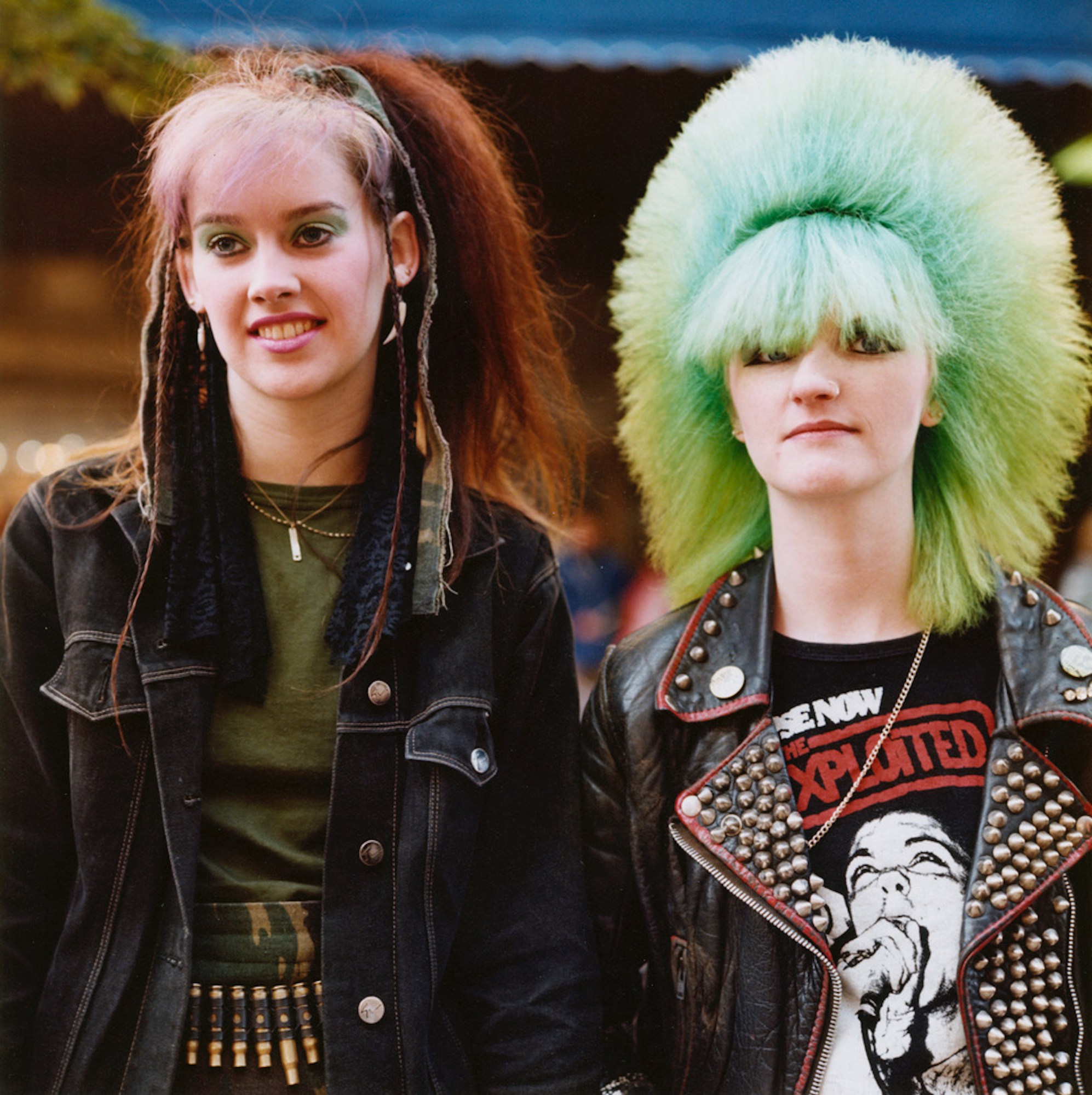The year was 1940, and the UK was deep in the throes of war as the German Luftwaffe unleashed the Blitz, an eight-month bombing campaign designed to decimate British infrastructure. Vital centres of industry in cities including London, Liverpool, Birmingham, and Manchester were destroyed, leaving vast expanses of rubble and ruin in their wake, devastating the livelihoods of local working-class communities.
That very year, Shirley Baker (1932-2014) and her twin sister Barbara received Brownie cameras from an uncle. Just eight years old, Shirley quickly fell in love with photography, discovering a new way of seeing the world. Where Barbara was outgoing and gregarious, Shirley enjoyed the pleasures of privacy and solitude, which photography afforded her as a keen observer of the human condition.

Growing up in Kersal, a small town just northwest of Manchester, the twins pursued their passion for the arts, their talents nurtured by a family of artists and artisans. Blessed with parents who didn’t want to restrict their daughters’ dreams, Shirley became one of the few women in post-war Britain to receive formal photographic training at Manchester College of Technology and then later at London’s Regent Street Polytechnic and College of Printing (the latter now Univesity of Westminster and London College of Communication, respectively).
After graduating, Shirley worked as an in-house factory photographer for fabric manufacturer Courtaulds, a practical solution to the issue of employment in a male-dominated industry. “She would have loved to have been a press photographer,” says Nan Levy, her daughter and Director of the Shirley Baker Estate. “But she couldn’t be a member of the union as a woman, so she couldn’t get a press card. Maybe that’s the reason she didn’t get the recognition she deserved.”

But all of that has finally begun to change, as Shirley’s extraordinary archive is beginning to receive its proper due with the recent publication of Shirley Baker: 1960–1980s (Café Royal Books), a limited edition box set featuring two prints and six books, including London 1980s and Punks 1980s, a vibrant collection of post-punk street portraits as well as Shirley’s long-term documentation of the working class communities of Manchester and Salford. Shut out of the ranks at the start of her career, Shirley forged her own path, focusing her attention on those living in war-torn neighbourhoods. Under a massive wave of “slum” clearance policies during the late 50s and 60s, residents were subject to eviction, displacement, and relocation while their homes and businesses were razed.
“I think she stumbled across it by accident, and then she became compelled to go back time after time,” Nan says. “She was very patient, and if she was there for long enough, people didn’t feel threatened, possibly because she was a woman. If somebody in the street were from the authorities, they would be men. People thought they were going to put an X on your door, which meant your house was the next one to be demolished.”
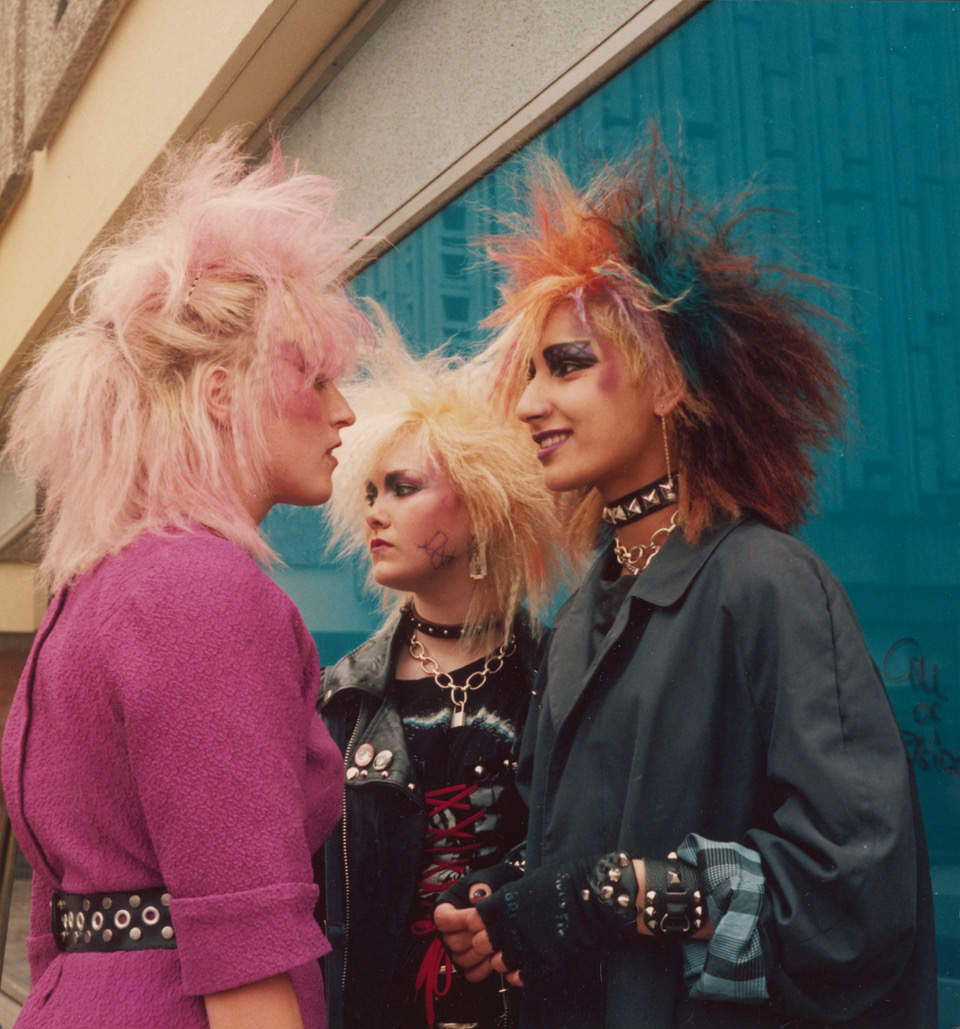
Although it wasn’t her community, Shirley lived nearby and was very moved by what she saw. “My sympathies lay with the people who were forced to exist miserably, often for months on end, sometimes years, whilst demolition went on all around them,” Shirley said. Force to forge her own path as a photographer, she used the camera as a tool of preservation and advocacy, making visible lives and landscapes being erased throughout the 60s and 70s, devoting two decades to chronicling the day-to-day impact of radical environmental change. “I think she was alarmed by the change and the fact that nobody was recording it, so she felt compelled to do so even though nobody was interested when she tried to get things published,” says Nan. “Nobody wanted to show her street scenes; they just weren’t fashionable.”
Shirley made sure that would never happen. Blessed with a powerful mix of strength, determination, tenacity, and care, Shirley held her own everywhere she went, perhaps most strikingly on the streets of London during the height of the post-punk era. One week in 1984, both Nan and her father received opportunities to relocate to London. “It was purely by coincidence,” Nan says. “I was in fashion and my father was a doctor. We sat down with Mum and said, ‘We’re going to London. Are you coming?’ But she didn’t want to leave Manchester and her family. She thought it was important to keep our roots where they were.”

Nan and her father got flats in the same Camden building, and Shirley began making sojourns, staying a week and making London her second home. While her husband and daughter were at work, Shirley readily made her way to Camden Market, camera in hand, photographing the colourful explosion of street style amid a new generation of youth reinventing music, fashion, and pop culture in their image. With the rise of music videos and independent magazines like i-D and The Face, British youth were poised to transform the image of cool.
In London 1980s and Punks 1980s, Shirley’s vivid images transport us back to another time when street culture and community formed the essence of social bonds. Her vivid colour pictures of the era pick up where her earlier experiments on the streets of Manchester and Salford during the 1960s left off – adding a splash of energy that perfectly matches the pomp and splendour of her street photographs.
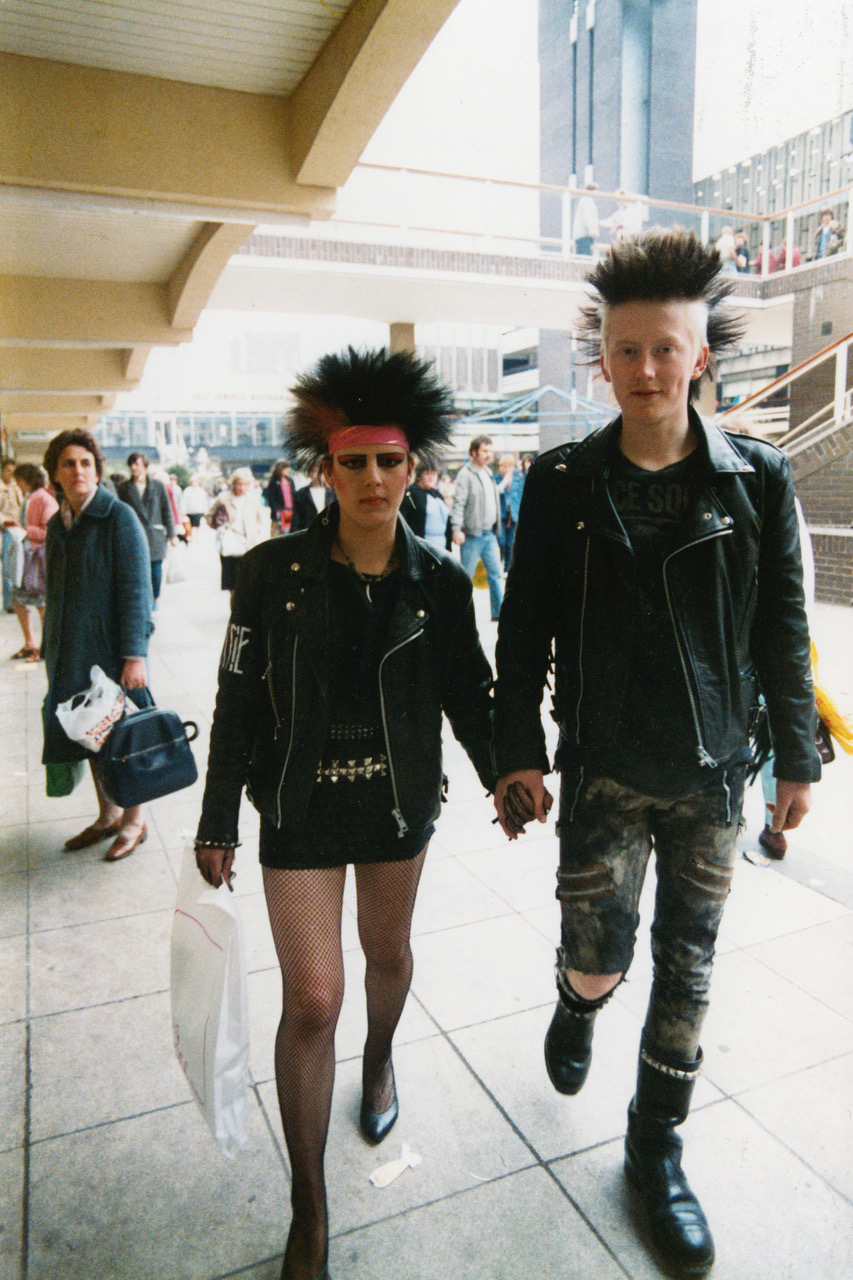
Like the children Shirley photographed on the streets of Manchester, the London youth were comfortable, if not openly engaging, with her camera. Her photos of teens sporting spiky Mohawks and MC jackets, bleached bouffants and plaid bondage pants, kohl-rimmed eyes and razor blade earrings are the epitome of subversive chic, exemplifying a proper “fuck the establishment” response to the reign of Margaret Thatcher.
Throughout her career, Shirley was devoted to centering those on the fringes and in the margins, celebrating their beauty and vitality in the face of a society that would just as soon have them erased. “It has always astonished me how quickly things can disappear without a trace,” Shirley said — and so, on her watch, she did what had to be done to ensure this didn’t happen.
‘Shirley Baker: 1960–1980s’ is published by Café Royal Books
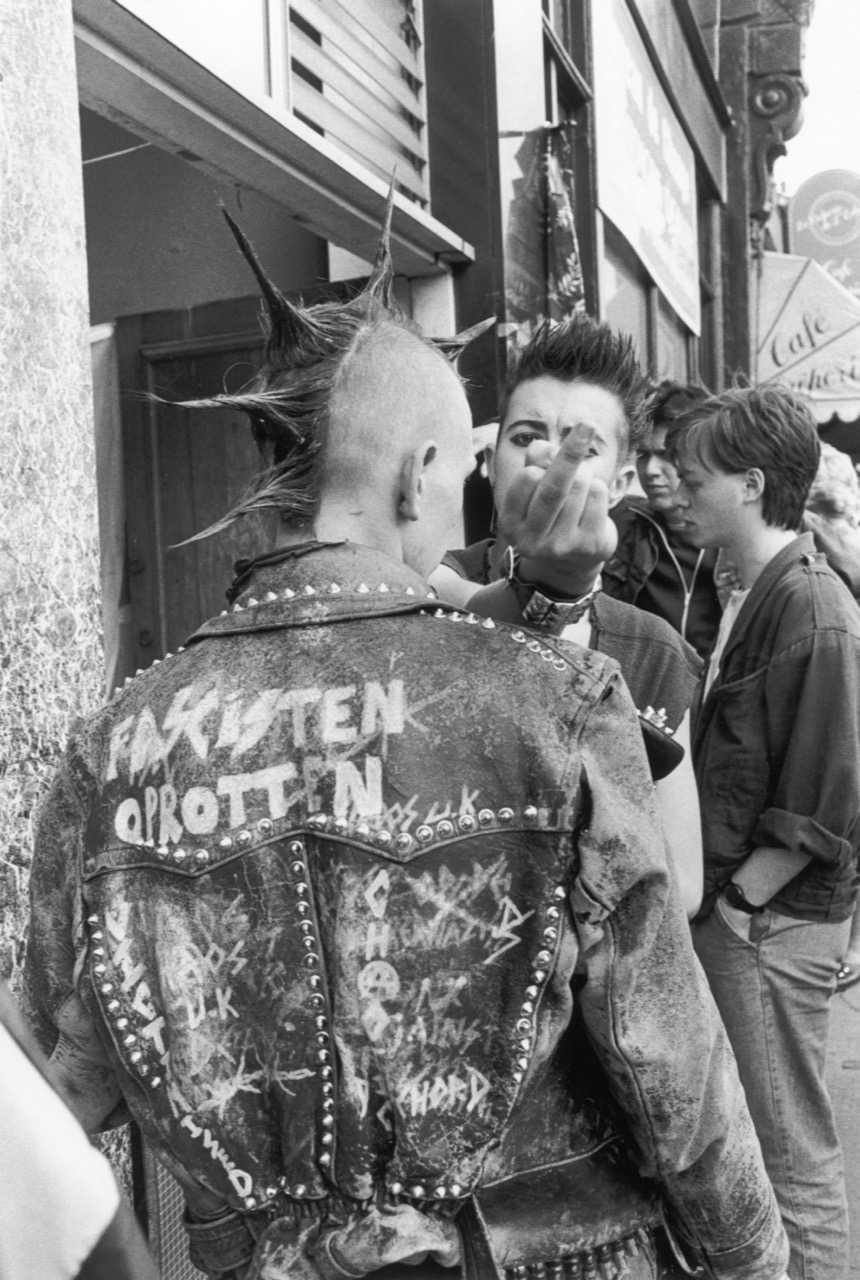
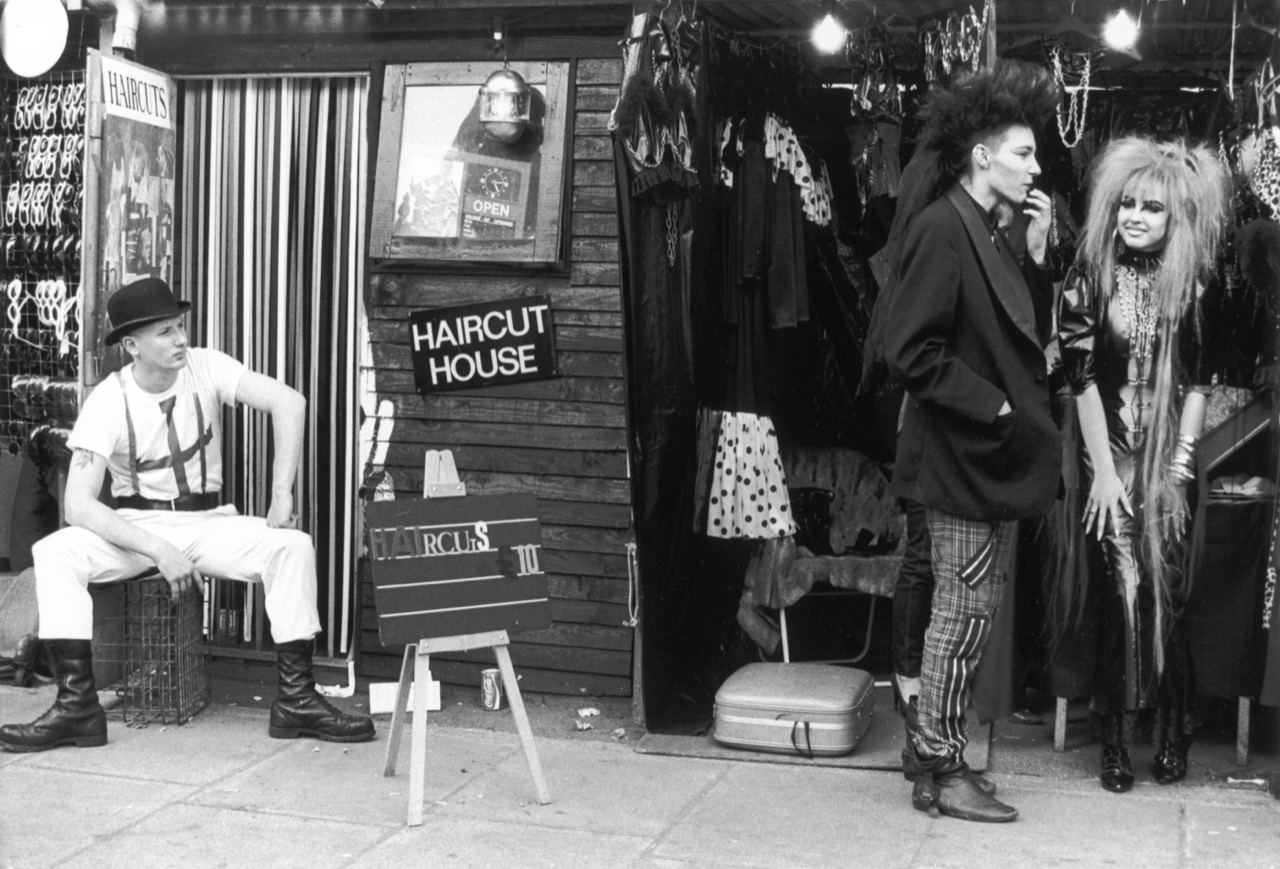
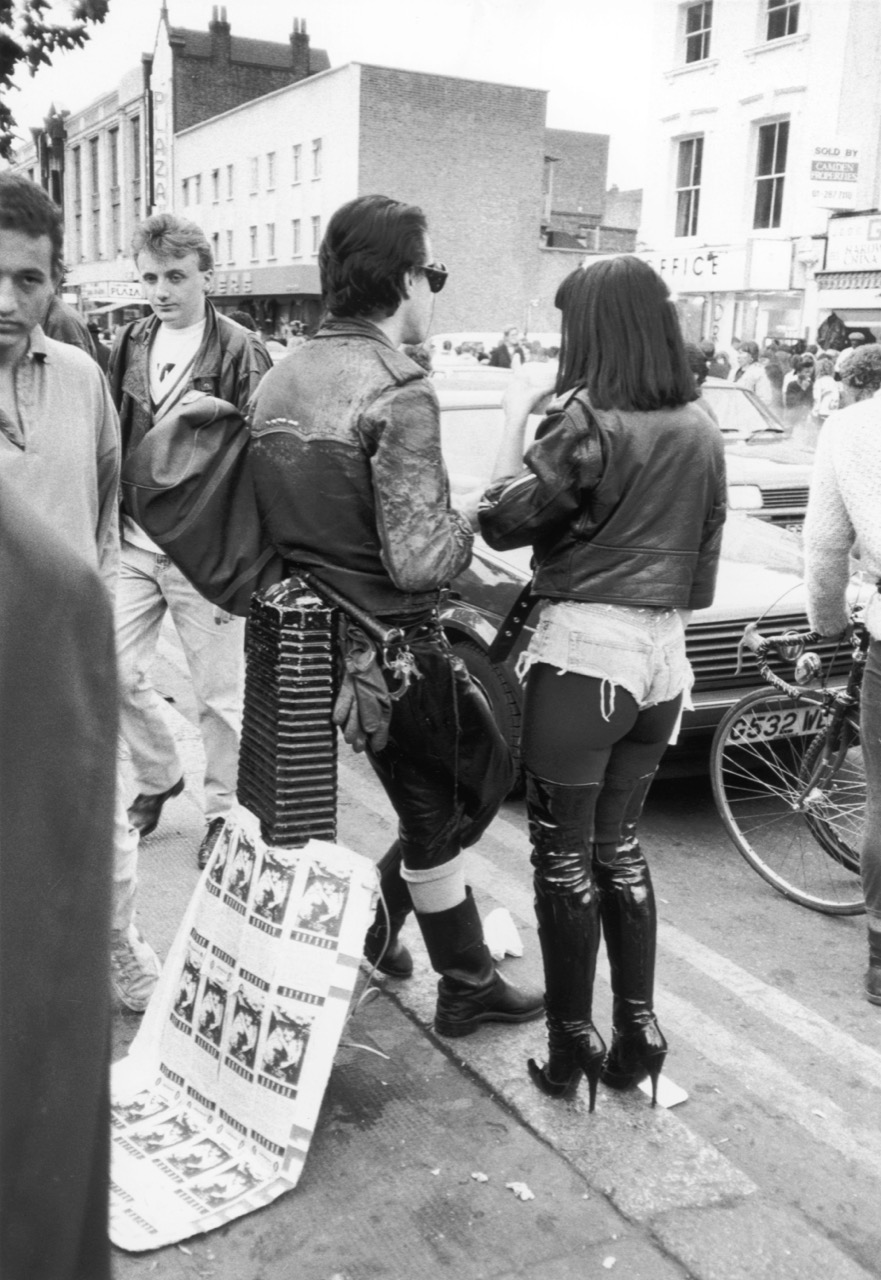
Credit
All images © Shirley Baker
